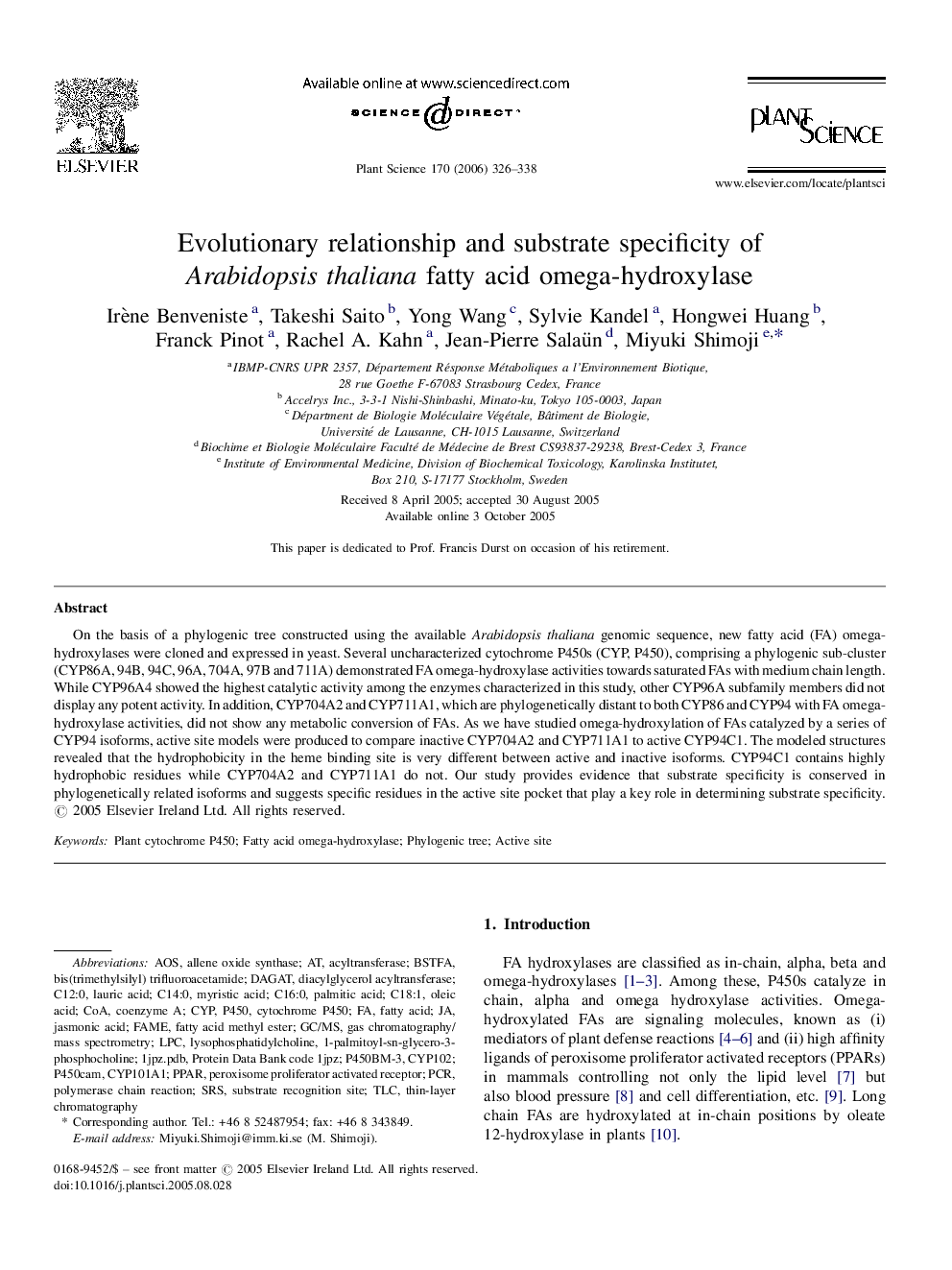| کد مقاله | کد نشریه | سال انتشار | مقاله انگلیسی | نسخه تمام متن |
|---|---|---|---|---|
| 2018630 | 1067863 | 2006 | 13 صفحه PDF | دانلود رایگان |
عنوان انگلیسی مقاله ISI
Evolutionary relationship and substrate specificity of Arabidopsis thaliana fatty acid omega-hydroxylase
دانلود مقاله + سفارش ترجمه
دانلود مقاله ISI انگلیسی
رایگان برای ایرانیان
کلمات کلیدی
DAGATLPCPPARBSTFAP450BM-3TLCAcyltransferaseCOACYP102C12:0SRSC14:0P450camC16:0 - C16: 0C18:1 - C18: 1GC/MS - GC / MSOleic acid - اسید اولئیکjasmonic acid - اسید جاسونیکMyristic acid - اسید مریستیکFatty acid - اسید چربAOS - بهPhylogenic tree - درخت فلیگونیکDiacylglycerol acyltransferase - دیسیللیسرول آکیلتانسفرازازsubstrate recognition site - سایت به رسمیت شناختن بسترactive site - سایت فعالAllene oxide synthase - سنتاز اکسید آلنCytochrome P450 - سیتوکروم پی۴۵۰lauric acid - لوریک اسیدFatty acid methyl ester - متیل استر اسید چربFAME یا fatty acid methyl esters - متیل استرهای اسید چربpolymerase chain reaction - واکنش زنجیره ای پلیمرازPCR - واکنش زنجیرهٔ پلیمرازPalmitic acid - پالمیتیک اسیدthin-layer chromatography - کروماتوگرافی نازک لایهgas chromatography/mass spectrometry - کروماتوگرافی گاز / طیف سنج جرمیcoenzyme A - کوآنزیم APeroxisome proliferator activated receptor - گیرنده فعال فعال پروکسیوم
موضوعات مرتبط
علوم زیستی و بیوفناوری
علوم کشاورزی و بیولوژیک
دانش گیاه شناسی
پیش نمایش صفحه اول مقاله

چکیده انگلیسی
On the basis of a phylogenic tree constructed using the available Arabidopsis thaliana genomic sequence, new fatty acid (FA) omega-hydroxylases were cloned and expressed in yeast. Several uncharacterized cytochrome P450s (CYP, P450), comprising a phylogenic sub-cluster (CYP86A, 94B, 94C, 96A, 704A, 97B and 711A) demonstrated FA omega-hydroxylase activities towards saturated FAs with medium chain length. While CYP96A4 showed the highest catalytic activity among the enzymes characterized in this study, other CYP96A subfamily members did not display any potent activity. In addition, CYP704A2 and CYP711A1, which are phylogenetically distant to both CYP86 and CYP94 with FA omega-hydroxylase activities, did not show any metabolic conversion of FAs. As we have studied omega-hydroxylation of FAs catalyzed by a series of CYP94 isoforms, active site models were produced to compare inactive CYP704A2 and CYP711A1 to active CYP94C1. The modeled structures revealed that the hydrophobicity in the heme binding site is very different between active and inactive isoforms. CYP94C1 contains highly hydrophobic residues while CYP704A2 and CYP711A1 do not. Our study provides evidence that substrate specificity is conserved in phylogenetically related isoforms and suggests specific residues in the active site pocket that play a key role in determining substrate specificity.
ناشر
Database: Elsevier - ScienceDirect (ساینس دایرکت)
Journal: Plant Science - Volume 170, Issue 2, February 2006, Pages 326-338
Journal: Plant Science - Volume 170, Issue 2, February 2006, Pages 326-338
نویسندگان
Irène Benveniste, Takeshi Saito, Yong Wang, Sylvie Kandel, Hongwei Huang, Franck Pinot, Rachel A. Kahn, Jean-Pierre Salaün, Miyuki Shimoji,